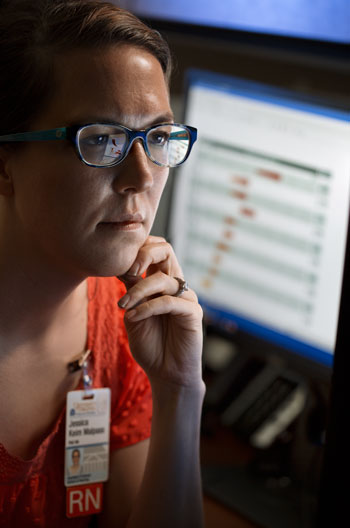Spotlight on the Experience of 'Invisible' Children and Families



Even in an era when Wonder—a book about a boy with severe facial deformities struggling to fit in at a new school—can become a best-selling book and film, severely disabled children with chronic medical complexity and their families often remain largely out of Americans’ collective view.
“These families are pretty invisible,” explains Jessica Keim-Malpass, a pediatric oncology nurse. “One reason is the stigma. Sometimes these kids don’t look or act like other typically developing children, and have been left out of traditional social structures. Two, they don’t fit neatly into individual categories, like cancer, or heart disease, for which we have a context, medical home base, and support systems.”
That invisibility, says Keim-Malpass, means there aren’t established modalities of support. It also means that clinicians caring for these children—who often bounce between the ER, hospital, numerous specialists, and home—sometimes lack a full picture of how families care and cope.
 Keim-Malpass, systems engineer Rupa Valdez, School of Medicine, and UVA physician Christopher Lunsford received a $444,000 National Institutes of Health grant to examine how Virginia families with medically complex children perceive their experiences managing their child’s conditions. Ultimately, the narratives will inform a high-tech platform to aid these families’ caregiving and communication patterns with clinicians and providers.
Keim-Malpass, systems engineer Rupa Valdez, School of Medicine, and UVA physician Christopher Lunsford received a $444,000 National Institutes of Health grant to examine how Virginia families with medically complex children perceive their experiences managing their child’s conditions. Ultimately, the narratives will inform a high-tech platform to aid these families’ caregiving and communication patterns with clinicians and providers.
Through interviews and a social network analysis that will shed light on the ways in which they manage—juggling hand-offs, tracking medications, prioritizing when other complications arise—Keim-Malpass and Valdez will collect narratives and details that will inform a technological platform they plan to develop to help these families cope, care and communicate better.
As many as a half-million American kids suffer from a broad range of complex medical conditions that make them reliant on assistive technology, like tracheal and feeding tubes, colostomy bags, wheelchairs and shunts. Many are born with syndromes that are not well understood, and driven by genetics. Many have limited life expectancies. Family members provide the vast majority of these kids’ care at home, without reprieve, giving up jobs, income, and community connectivity as they do.
Though these children make up just one percent of American kids, they account for nearly a third of pediatric health care spending and more than half of all unintended hospital readmissions, Malpass says. Eighty percent of the cost of their care—provided by the government through Medicaid services for the severely disabled—is related to inpatient care. So while supporting these families is the right thing to do, it’s also financially prudent, says Keim-Malpass, because improved connectivity between caregivers and clinicians means cost-savings and enhanced family-related quality of life.
Too, Keim-Malpass hopes their project offers a way to better bring children with medical complexity and their families into the light. That’s a critical facet of support for these families, says Keim-Malpass, who points to the social isolation that disability and illness often wreaks.
“We need to learn and remember, when we see these kids out and about, not divert our own eyes,” she explains. “That further ostracizes these families, and makes a difficult situation even harder. All of us can be more inclusive in how we engage these families and their children, treating them like we would any other child we encounter.”
###
